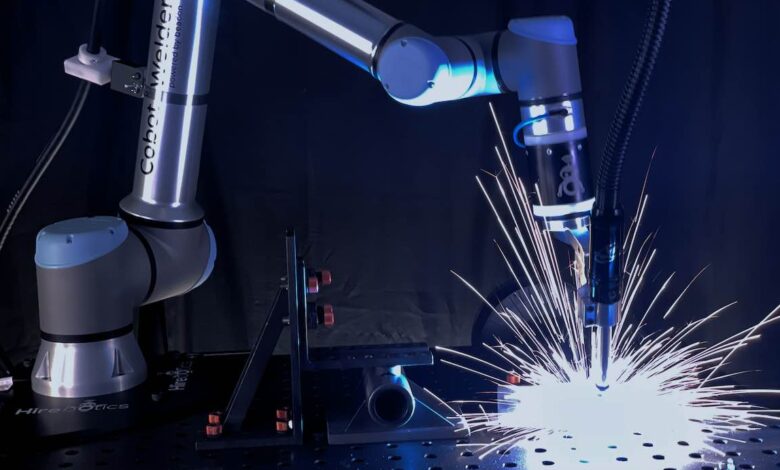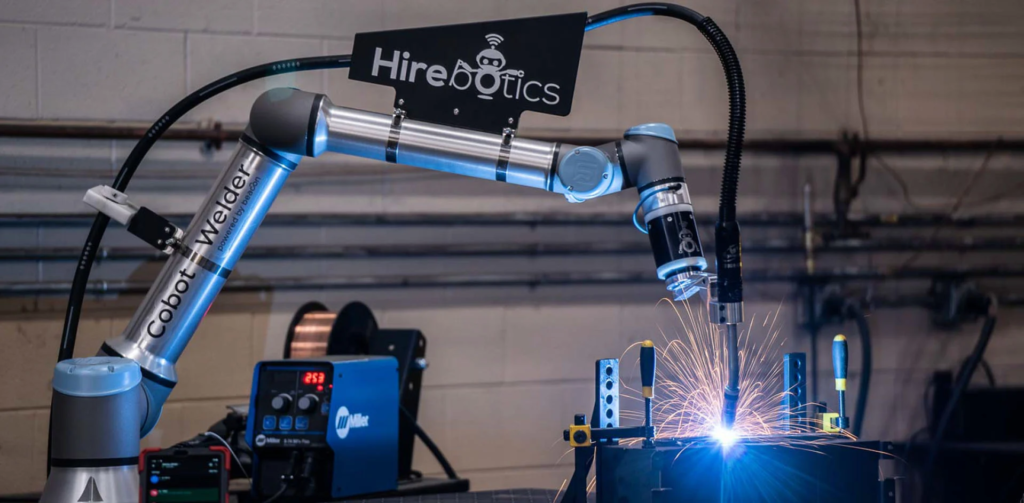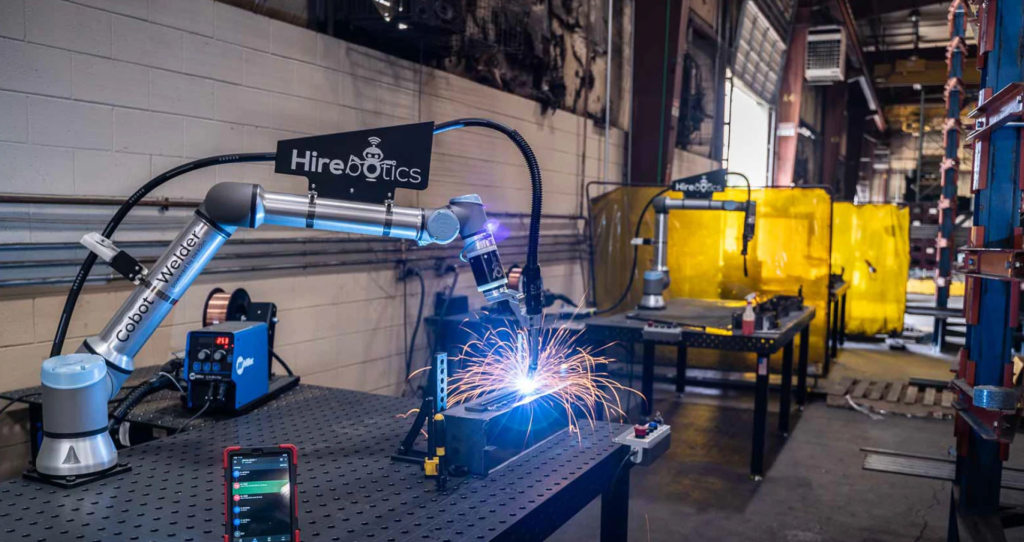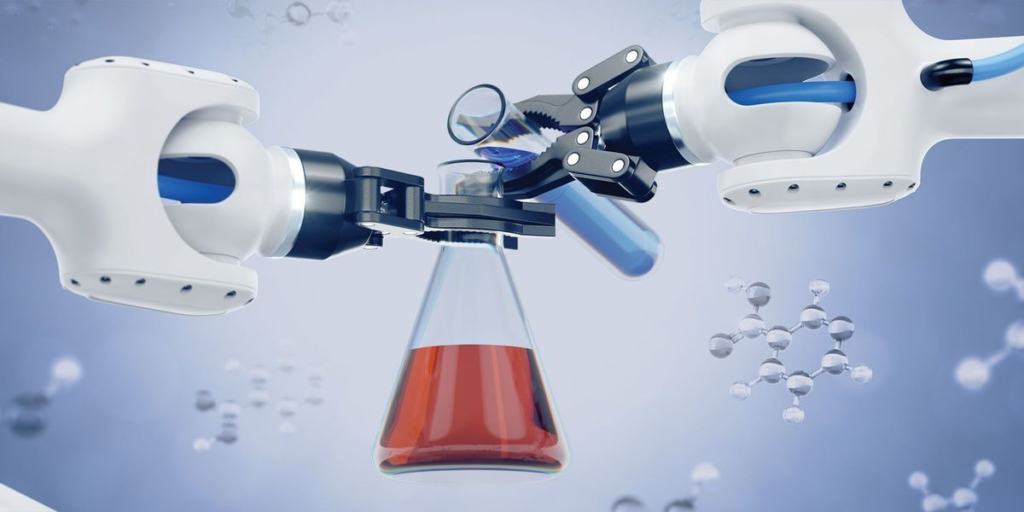Collaborative Robots: Intelligent Robots For Your Business

Discover the world of collaborative robots and their potential to revolutionize your business operations. These intelligent machines, also known as cobots, are far from the traditional factory robots. This blog post will delve into their benefits and tasks performed. Ready to learn more about the future of intelligent automation for your business? Let’s dive in! But before we do, let’s first understand what exactly collaborative robots are.
What are Collaborative Robots?
Collaborative robots, or cobots, represent a new era of intelligent machines designed for collaborative work with humans. Unlike traditional industrial robots, they operate without safety barriers, adapting to the presence of humans through advanced sensors and software. Their flexibility is highlighted by easy programming, enabling non-technical personnel to tailor them for various industries.
Versatile in tasks from pick-and-place to complex assembly, cobots find applications across manufacturing, healthcare, warehouses, and small-scale businesses. User-friendly interfaces and intuitive programming systems facilitate quick training, allowing employees to teach cobots tasks through physical guidance. Space-saving advantages due to their compact size make cobots ideal for constrained environments.
Beyond physical capabilities, cobots possess cognitive abilities, employing machine learning algorithms to adapt based on changing conditions. Collaborative robots signify the next evolution in automation, blending intelligence, flexibility, and worker safety. In upcoming sections, we’ll explore why embracing this trend could revolutionize your business. Keep reading for more insights!

Benefits of Collaborative Robots for Businesses
The key advantages of integrating collaborative robots (cobots) into business operations. It emphasizes the positive impact on safety, flexibility, workflow optimization, employee satisfaction, and cost savings. Here are a few additional points to further highlight the significance of cobots:
- Rapid Return on Investment (ROI): Due to their smaller size, ease of integration, and versatility, cobots often offer a quicker return than larger, traditional industrial robots.
- Cross-Industry Applicability: Collaborative robots are not limited to specific industries. Their adaptability makes them suitable for various sectors, including manufacturing, healthcare, logistics, and more.
- Market Competitiveness: Companies that embrace cobot technology gain a competitive edge by staying agile in response to market changes and customer demands.
- Quality Improvement: Cobots, equipped with precision and accuracy, can improve product quality by reducing errors and variability in manufacturing processes.
- Remote Monitoring and Operation: Some cobot models allow for remote monitoring and operation, enabling businesses to oversee operations from a distance and potentially support a decentralized or remote workforce.
- Improved Ergonomics: By reducing the need for repetitive, strenuous activities, cobots contribute to improved human ergonomics.
- Global Connectivity: Businesses can connect and coordinate cobots across different locations, facilitating global operations and collaboration.
- Continuous Innovation: The field of collaborative robotics is evolving, with ongoing advancements in technology leading to improved capabilities, features, and applications.
By incorporating these additional aspects, the summary provides a well-rounded perspective on how collaborative robots can significantly contribute to the success and growth of businesses in today’s dynamic and competitive landscape.
Types of Tasks Performed by Collaborative Robots
Collaborative robots, or cobots, are versatile machines designed to work alongside humans across various industries. Their adaptability, precision, and safe interaction with human workers make them ideal for a range of tasks:

- Pick and Place Operations: Efficiently picking up and placing items, aiding tasks like loading and unloading materials or placing items on shelves in manufacturing and logistics.
- Assembly and Disassembly: Programmable for assembling components on an assembly line, performing tasks such as screwing, fastening, or connecting parts. They can also handle disassembly tasks for recycling.
- Quality Inspection: Equipped with vision systems and sensors, cobots can inspect products for defects, measure dimensions, and ensure quality standards are met before shipping.
- Welding and Material Handling: Used for precision welding in manufacturing and handling materials, including lifting and moving heavy objects.
- Packaging and Palletizing: Efficiently packing products into boxes and stacking them on pallets during packaging operations, speeding up the process and reducing manual handling risks.
- Machine Tending: Tending to various machines, loading raw materials, unloading finished products, and performing routine maintenance tasks for continuous operation.
- Testing and Inspection: Conducting testing procedures by interacting with testing equipment in industries like electronics or automotive, where rigorous testing is essential.
- Material Removal: Programming cobots for tasks like polishing, deburring, or sanding to remove excess material from workpieces, contributing to achieving a smooth and finished product.
- Laboratory and Healthcare Tasks: Handling delicate tasks in laboratory settings, such as dispensing liquids or moving samples. In healthcare, cobots can assist in surgery, perform repetitive tasks, or handle medical supplies.
- Collaborative Tasks with Human Workers: Working collaboratively with humans to assist in tasks requiring precision, strength, or handling dangerous materials.
The examples showcase the versatility of collaborative robots, making them suitable for diverse applications. As technology advances, cobots will likely take on more complex and sophisticated tasks.
Cost and ROI analysis for businesses considering implementing Collaborative Robots
When evaluating the cost and return on investment (ROI) for implementing collaborative robots, businesses should consider various factors:
- Maintenance Costs: Collaborative robots often have lower maintenance costs due to simpler designs and built-in safety features, reducing downtime and expenses.
- Flexibility and Adaptability: The adaptability of collaborative robots allows for easy reprogramming and redeployment to different tasks, offering long-term value and flexibility in response to changing production needs.
- Training and Skill Requirements: User-friendly interfaces and ease of programming minimize the need for highly specialized skills, reducing training costs and making collaborative robots accessible to a broader range of employees.
- Scalability: Collaborative robots offer scalability, allowing businesses to start with a few units and gradually scale up, providing a controlled implementation with the option to expand based on observed benefits.
- Integration with Existing Systems: Assess how well collaborative robots integrate with existing machinery and systems, considering compatibility with other automation technologies and software for efficient implementation.
- Customization and Additional Features: Consider features like vision systems or advanced sensors that may contribute to upfront costs but align with specific business needs, enhancing the capabilities of collaborative robots.
- Regulatory Compliance: Ensure collaborative robots comply with industry regulations and standards, preventing legal issues and ensuring a safe working environment.
- Supplier Support and Warranty: Evaluate the support and warranty terms provided by the robot manufacturer, contributing to a positive ROI by addressing issues promptly and efficiently.
By incorporating these considerations, businesses can make a comprehensive and informed decision about collaborative robot implementation, weighing potential benefits against initial and ongoing costs in the manufacturing and automation landscape.
Comparison with Traditional Industrial Robots
Collaborative robots, also known as cobots, have gained significant attention in recent years due to their ability to work alongside humans and offer increased flexibility on the factory floor. However, it is essential to understand how they differ from traditional industrial robots.
1. Programming Capabilities
- Cobots: Easily programmed by non-experts through intuitive interfaces, offering versatility and adaptability.
- Traditional Robots: Typically programmed for specific tasks, requiring extensive programming knowledge.
2. Safety Features
- Cobots: Equipped with advanced sensors and algorithms to detect human presence, ensuring a safer working environment without physical barriers.
- Traditional Robots Often require physical barriers or cages for safe operation, limiting collaboration with humans.
3. Size and Mobility
- Cobots: Smaller, lighter, and designed for portability, allowing easy movement between workstations and quick reconfiguration of production lines.
- Traditional Robots Tend to be larger and less mobile, requiring dedicated spaces on the factory floor.
4. Maintenance
- Cobots: Often equipped with self-diagnostic capabilities, reducing downtime and increasing overall efficiency.
- Traditional Robots May require specialized maintenance personnel for regular upkeep.
In summary, the flexibility, safety features, ease of use, portability, and lower implementation costs position collaborative robots as a compelling choice for businesses aiming to optimize productivity while prioritizing worker safety. Looking forward to delving into the future outlook of collaborative robotics in the next blog section!

Conclusion: Is It Time for Your Business to Embrace
To sum up, collaborative robots offer a revolutionary solution with unparalleled benefits for businesses of all sizes. By seamlessly collaborating with human operators, these robots enhance workplace adaptability and accuracy regarding repetitive tasks. Additionally, they prioritize safety through advanced sensors and algorithms.
These versatile machines have been successfully implemented in various industries, increasing productivity and decreasing costs. Although the initial investment may be higher, long-term savings are guaranteed through improved efficiency, reduced labor expenses, and even potential insurance premium reductions. Unlike traditional robots limited by safety zones, collaborative robots excel in complex or heavy-duty tasks, allowing businesses to optimize their operations for maximum efficiency.
In today’s world of Industry 4.0, where automation drives innovation, collaborative robot technology is destined to play an increasingly significant role. With continuous technological advancements, these robots will remain leaders in driving efficiency and innovation across industries.
Also, Read The Following: cosmic value



